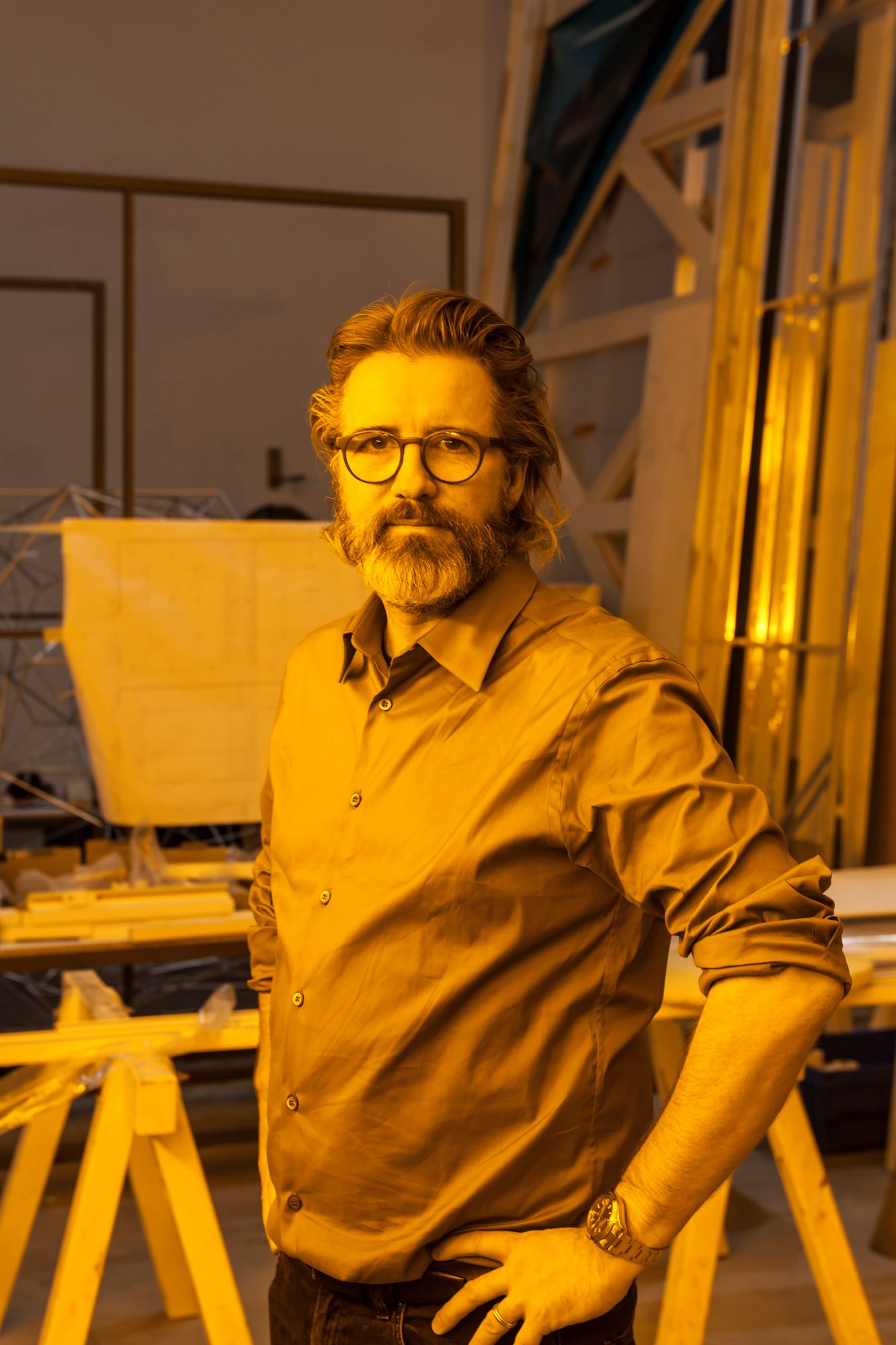
Olafur Eliasson is using his mid-career survey at Tate Modern in London to look forward, not back.
Seventeen years after the Danish-Icelandic artist created The Weather Project, which transformed the museum’s Turbine Hall into a huge, misty indoor solarium with an urgent ecological message, he has returned to fill its galleries with more than 40 works. The message of the new show, which opens today and is titled “Olafur Eliasson: In Real Life,” is the same—only now, it’s more urgent than ever.
“I don’t want to use a fear-based narrative, but we are living in an climate emergency,” he tells artnet News. “A lot of the work deals with the experience of nature, the atmosphere, or ecology, and now these things have been weaponized,” he says, apologizing for his “militaristic language.”
A lot has happened in the two decades since a young Eliasson documented Iceland’s endangered glaciers, which is among the early works he has updated for his return to the Tate. “You can say there is a huge difference,” he says. “When I did The Weather Project in 2003, global warming was only professional terminology.”
Olafur Eliasson Din blinde passager (Your blind passenger) (2010). Installation view at ARKEN Museum of Modern Art, Copenhagen, 2010 Photo: Thilo Frank / Studio Olafur Eliasson.
The artist’s studio has also grown exponentially over the past two decades. Until 2000, he worked out of his living room, and three years later, he employed around 20 people. Now, he works with around 100 assistants, half of whom have been involved in the Tate show. His studio, which is based in a converted factory with an in-house canteen, also has its own media platform (soe.tv) and an insiders’ guide, the publication Open House.
Through works of art in rainbow colors and set pieces such as a foggy tunnel and an artificial waterfall on the banks of the Thames, the Tate Modern exhibition aims to convey something of the global enterprise that is Studio Olafur Eliasson. To stress the point, the studio’s vegetarian kitchen, which Eliasson created with his sister, Victoria Eliasdóttir, is taking up residency in the museum for the duration of the exhibition.
Art, cooking, TV, and numerous speaking engagements (including at places like Davos) are all part of the socially engaged artist’s desire to show that there are better ways of tackling the world’s biggest problems.
Olafur Eliasson, Stardust particle (2014). Tate
Photo: Jens Ziehe, 2017. © 2014 Olafur Eliasson.
“We need to re-imagine and re-engineer the systems that brought us to where we are,” he says. “We need to take risks. We don’t have a choice. The future,” he stresses, “has to be different from the past.”
Sounding like a progressive politician as much as an artist, Eliasson has long practiced what he preaches. Seven years ago, he co-founded the Little Sun project, which brings power to people living off-the-grid in the form of low-cost, portable solar lamps. Another initiative, the Green Light project, helps migrants integrate into their new surroundings. His architecture studio is also building a park and educational campus in Addis Ababa in Ethiopia, where he teaches.
Eliasson has skillfully navigated these non-profit projects with more lucrative commissions for an impressive list of blue-chip collectors. They range from Michael Bloomberg to Bernard Arnault’s Fondation Louis Vuitton. Studio Olafur Eliasson’s largest urban project so far is a corporate headquarters for an investment company set up by members of the LEGO toy dynasty. The artist is due to fill the Turbine Hall with the company’s white bricks for a DIY artwork.
Olafur Eliasson. Beauty (1993). Installation view at Moderna Museet, Stockholm, 2015 Photo: Anders Sune Berg. Courtesy of the artist; neugerriemschneider, Berlin; Tanya Bonakdar Gallery, New York / Los Angeles © 1993 Olafur Eliasson.
It must, at times, be something of an ethical minefield, especially in an environment where museum funding is under such close scrutiny. (Eliasson’s Tate show is supported by the AKO Foundation, set up by Nicolai Tangen, the Norwegian hedge fund millionaire who has also backed the British Museum’s current Edvard Munch exhibition.)
Asked whether the artist is glad that the Tate has ended its longstanding partnership with the fossil-fuel giant BP, Eliasson’s reply is pragmatic rather than dogmatic. “In the past ten years museums have had to operate on a higher moral high ground,” he says. But he warns against “suddenly scapegoating an institution,” which he describes as a form of populism.
“We all know Frick used very bad labor practices, so should we be bashing the Frick Collection?” he asks, referring to the 19th-century baron-turned-museum-founder Henry Clay Frick. “What is more important is how we navigate the future with our newly acquired higher moral standards.”
“Olafur Eliasson: In Real Life,” is on view at Tate Modern, Bankside, London SE1 9TG, July 11–January 5, 2020.